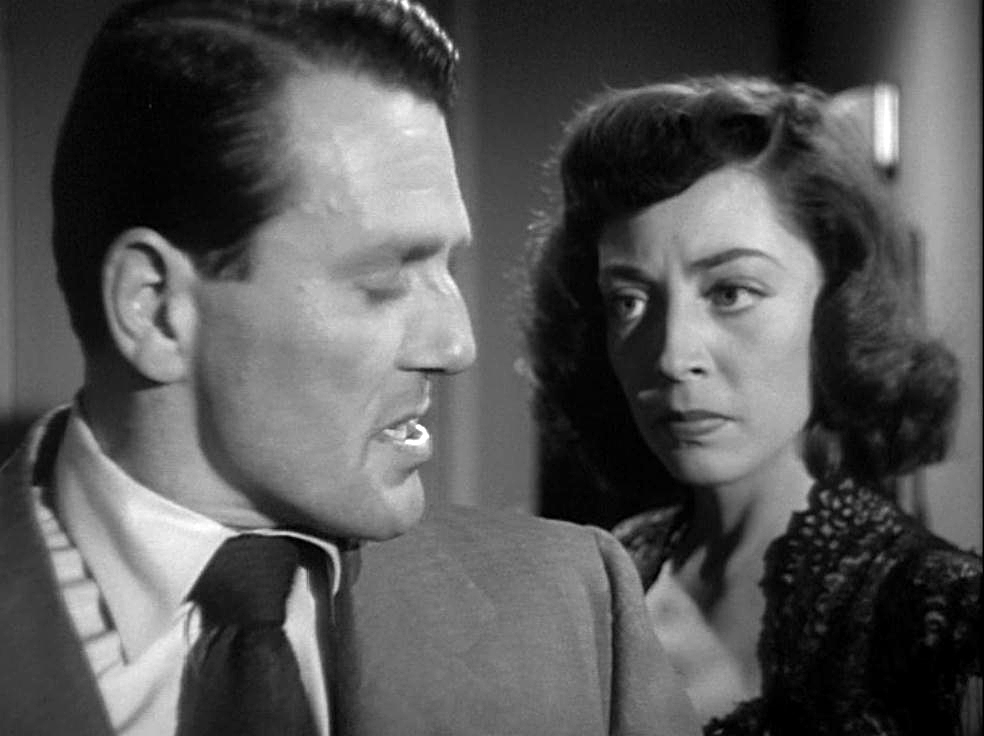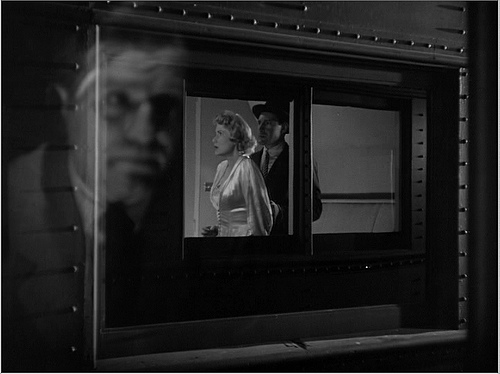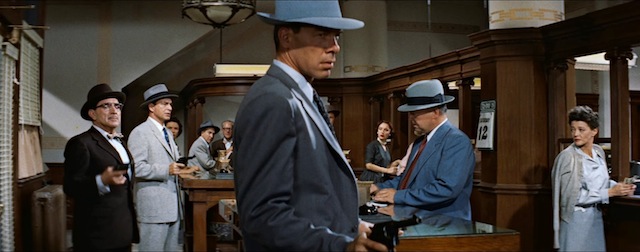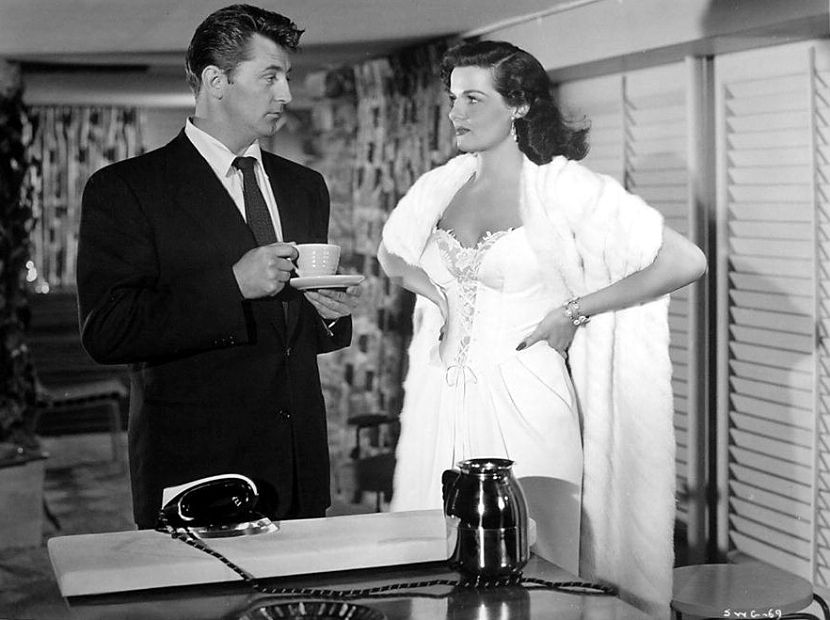
The overlooked film noir masterpiece The Narrow Margin (1952) is a taut 71 minutes of tension. Growly cop Charles McGraw plays hide-and-seek with a team of hit men on a claustrophobic train. Marie Windsor is unforgettable as the assassins’ target. It’s on my list of Overlooked Noir, and it’s coming up on Turner Classic Movies on Friday, November 27 – set your DVR.
McGraw plays a cop assigned to protect a gangster’s widow on her way to testify against the mob. He immediately loses his partner to an ambush and will have to protect his cargo all the way from Chicago to Los Angeles by himself. His only edge is that the hit men don’t know what his target looks like.
The Narrow Margin has two very special elements. The first is the hardboiled dialogue between McGraw and Windsor and their performances. The second is director Richard Fleisher’s imaginative staging of the woman-hunt up and down the tight corridors and compartments of the train.
The screenplay is easily the best of veteran Earl Felton’s career, and he was nominated for an Oscar for this B picture. When McGraw, still in shock, reflects on the sudden death of his longtime partner, Windsor hisses, “Some protection they send me – an old man who walks right into it and a weeper”. McGraw resents having anything to do with her: “Sister, I’ve known some pretty hard cases in my time, but you make ’em all look like putty”. Later he snarls, “He’s dead and you’re alive. Some exchange.” But they’re both trapped together, and they’re not the kind to make the best of it – the great lines just keep coming: “Relax, Percy, I wouldn’t want any of that nobility to rub off on me”.
The Narrow Margin opens with trench coats and fedora, cigarettes and shadowed faces; when there’s gunfire, we know for sure that we’re in a noir. But then Fleischer moves it all onto the train, and we hear the sound from railroad airbrakes. Fleischer makes an early use of handheld cameras to maneuver around the tight spaces. There’s an especially innovative moment when a fight breaks out in a cramped train restroom – the bottom of a shoe flies up to camera level, then we’re under the sink as head is banged into wall.
The cast is uniformly good. I especially like David Clarke as a (gay?) hit man and Paul Maxey as a very fat traveler who keeps blocking the narrow corridors.
Of course, this is all fifty years before cell phones, and there’s a retro lo-tech moment where a slow-moving train leaves a message via hook to be wired.
Fleischer was a very versatile (and underrated director). When he shot The Narrow Margin, he was a 35-year-old rising director. The Narrow Margin was his sixth noir in five years. After The Narrow Margin, he moved to epics (20,000 Leagues Under the Sea, The Vikings, Barabbas). He later made one of the very best WW II movies, Tora! Tora! Tora!, and the ahead-of-its-time dystopian sci-fi cult favorite Soylent Green. He even made the second Schwarzenegger Conan movie. His noir body of work (Bodyguard, Follow Me Quietly, Trapped, Armored Car Robbery, His Kind of Woman) is impressive, and, in my opinion, The Narrow Margin is his masterpiece.
The Narrow Margin plays frequently on Turner Classic Movies. It’s available to stream from Amazon, AppleTV, Vudu and YouTube. (Don’t confuse it with the inferior 1990 remake, Narrow Margin.)



